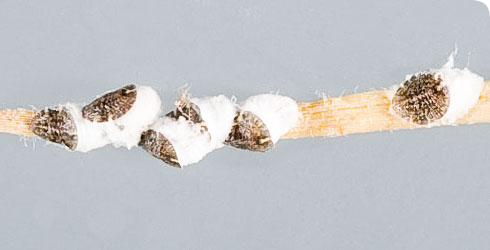Distribution
The horse-chestnut scale insect is thought to be a native of Asia that was accidentally introduced into Europe.
It was described from the grounds of the Chateau de Versailles in France in 1968, and its formerly-regal 'type locality' is probably the reason for its chosen species name.
It was originally noted on lime and horse chestnut trees: Tilia vulgaris and Aesculus hippocastanum.
It appeared in Britain at about the same time as in France. Material in the Natural History Museum was collected at Kew and Wisley Gardens from 1965 onwards.
It is currently widely distributed and common across much of Britain, especially more southern parts of England, but it is also now known in northern England and also Edinburgh and Glasgow.
Much of north-west Europe is also affected.
Habitat
This species affects many woody hosts, mainly trees, and about 100 species have been documented as hosts of the horse-chestnut scale.
In addition to the horse-chestnut (Aesculus hippocastanum) that lends the species its common name, the most common host trees are:
- limes (Tilia spp)
- sycamore (Acer pseudoplatanus)
- maples (Acer spp)
- magnolias
- sweet bay (Laurus nobilis)
Females often wander away from genuine host plants and oviposit on non-host plants (see photo on dandelion stem) and other surfaces including brick walls and paving slabs!
A true host is a plant species on which the scale can complete its life cycle.
